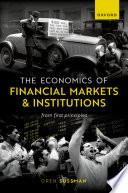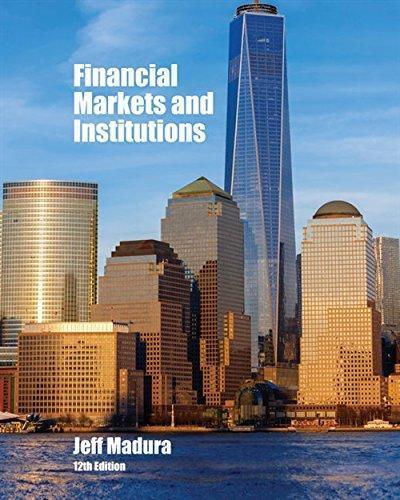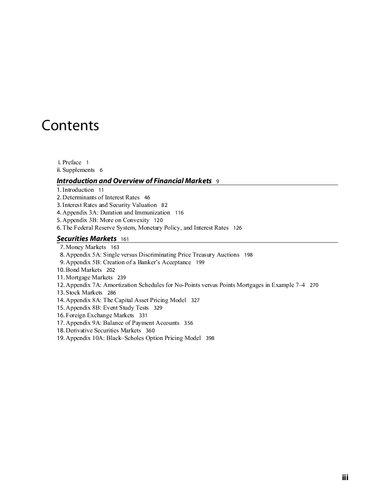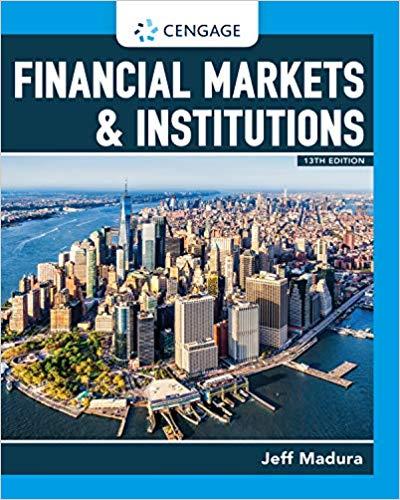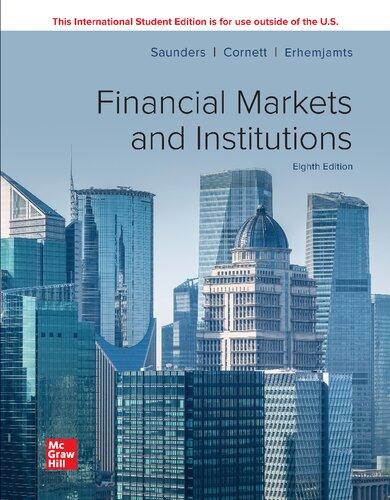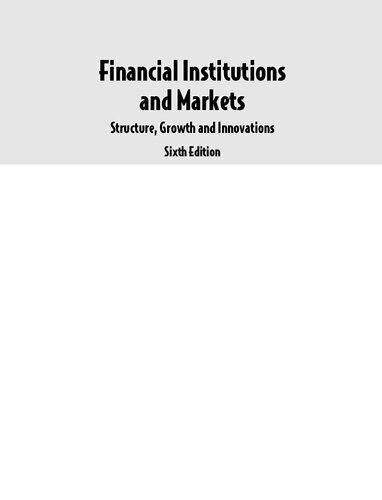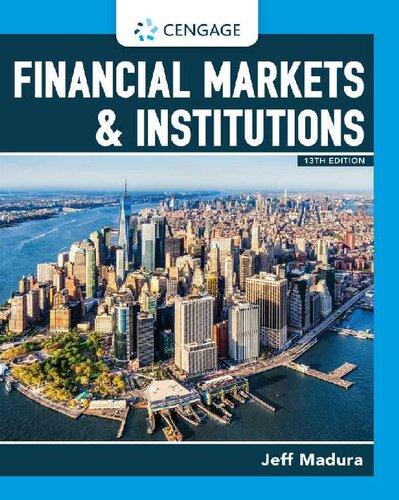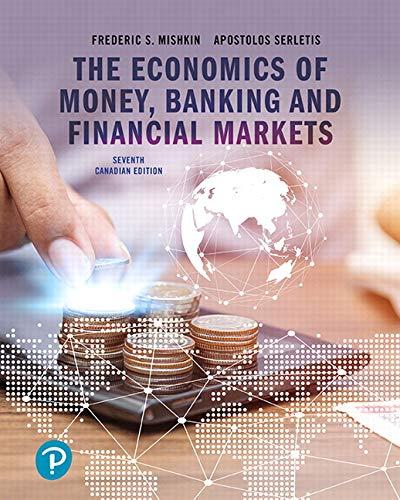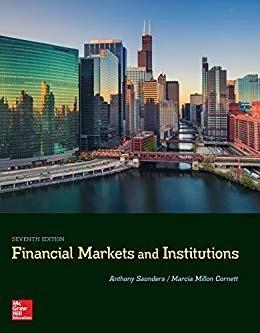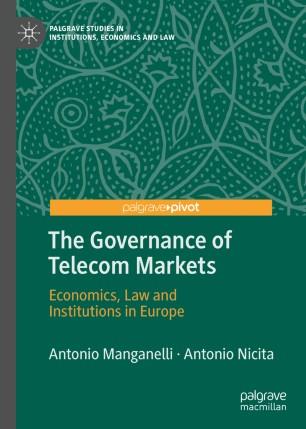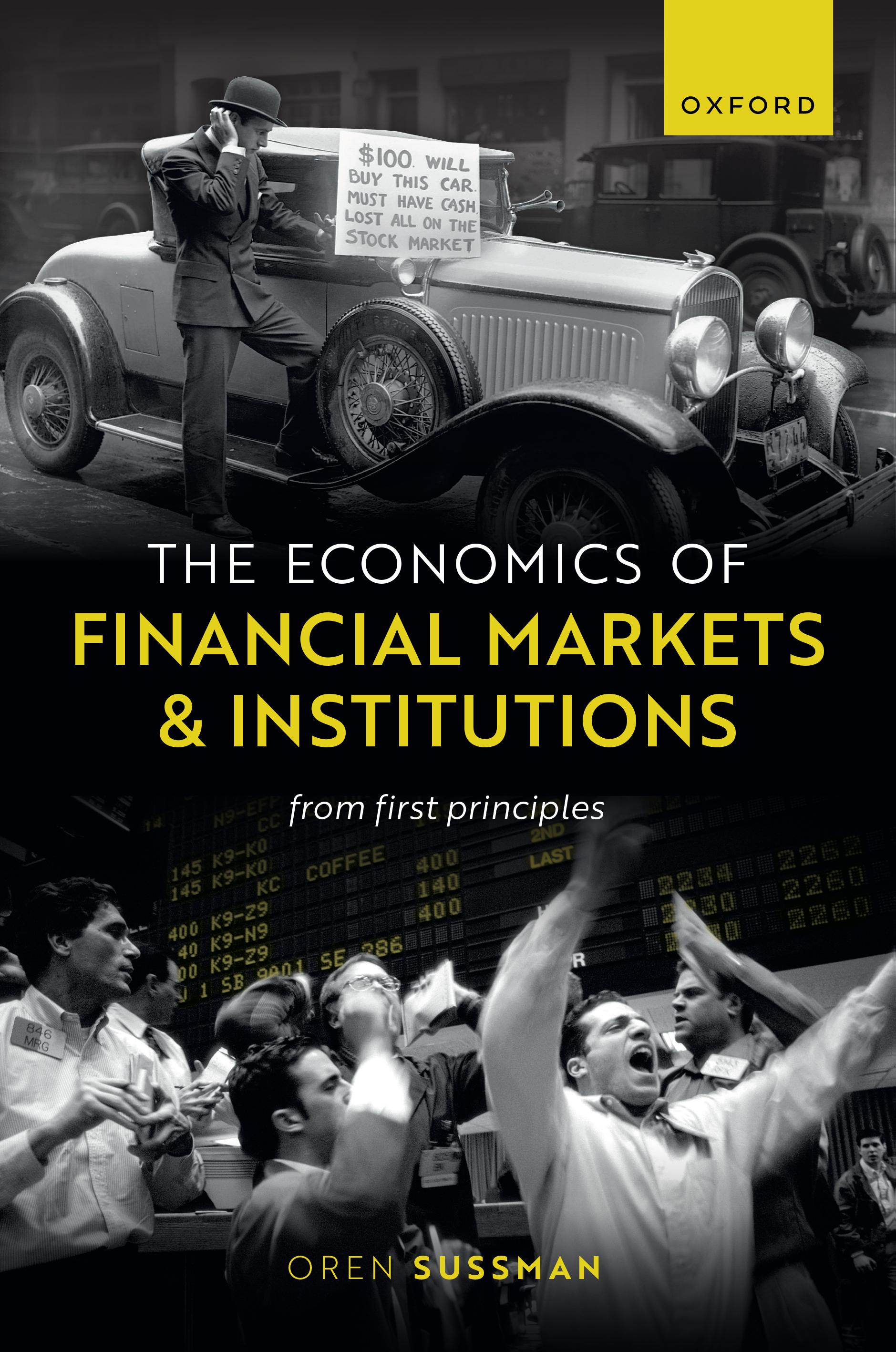TheEconomics ofFinancialMarkets andInstitutions fromFirstPrinciples
ORENSUSSMAN
GreatClarendonStreet,Oxford,OX26DP, UnitedKingdom
OxfordUniversityPressisadepartmentoftheUniversityofOxford. ItfurtherstheUniversity’sobjectiveofexcellenceinresearch,scholarship, andeducationbypublishingworldwide.Oxfordisaregisteredtrademarkof OxfordUniversityPressintheUKandincertainothercountries ©OrenSussman2023
Themoralrightsoftheauthorhavebeenasserted Allrightsreserved.Nopartofthispublicationmaybereproduced,storedin aretrievalsystem,ortransmitted,inanyformorbyanymeans,withoutthe priorpermissioninwritingofOxfordUniversityPress,orasexpresslypermitted bylaw,bylicenceorundertermsagreedwiththeappropriatereprographics rightsorganization.Enquiriesconcerningreproductionoutsidethescopeofthe aboveshouldbesenttotheRightsDepartment,OxfordUniversityPress,atthe addressabove
Youmustnotcirculatethisworkinanyotherform andyoumustimposethissameconditiononanyacquirer
PublishedintheUnitedStatesofAmericabyOxfordUniversityPress 198MadisonAvenue,NewYork,NY10016,UnitedStatesofAmerica
BritishLibraryCataloguinginPublicationData Dataavailable
LibraryofCongressControlNumber:2023930672
ISBN978–0–19–286973–9
DOI:10.1093/oso/9780192869739.001.0001
Printedandboundby CPIGroup(UK)Ltd,Croydon,CR04YY
LinkstothirdpartywebsitesareprovidedbyOxfordingoodfaithand forinformationonly.Oxforddisclaimsanyresponsibilityforthematerials containedinanythirdpartywebsitereferencedinthiswork.
Preface
ThisbookisbasedonintroductorylecturesonfinancialeconomicsthatIdelivered tomastersstudentsintheFacultyofLawattheUniversityofOxford.Mostofthe students,smartandhardworking(asmanylawyersare),hadnobackgroundin economics.Worse,someweremathsphobs;others,didnottakeanymathematics classesbeyondtheageof16,nordidtheypractisetheirpre-16skillssince.Hence, thechallengewastodeliverthebasicideasthatlawyersworkinginfinancialmarketsneedintheirdealingwithpractitionersandregulatorswiththeminimumuse ofmathematics.That,ofcourse,requireddrasticsimplificationofthematerialas wellas‘cuttingcorners’—hereandthere.ThecornersthatIhavedecidedtocut awaymaynotbetoeveryone’staste.Nevertheless,Ibelievethattheexperience thatIhavegainedwhiledeliveringtheselecturesisworthsharingwithothers.
Likemanyeconomists,followingthe2008financialcrisis,Ifeltthatfinance traininghasbecometoo‘engineeringminded’,losingtouchwithfundamentaleconomicanalysis.Thismanuscriptattemptstoprovidetheeconomicfoundations andtheirapplicationtofinance—jointly.Needlesstosay,thatlimitsthedepthand breadththatIcanprovide,onboththeconceptualaswellastheapplicationside. Thisbookdoesnotintendtoreplacesomeexcellenteconomictextbooksongame theory,consumertheory,orcontracttheory,nordoesitintendtoreplaceequally goodtextbooksincorporatefinance,banking,orassetpricing.Onlytoprovidea foundationfromwhichstudentscanexpandinbothdirections.
IamgratefultoLucaEnriqueswhoreadtheentiremanuscriptandprovided mewithmosthelpfulcomments.AlexanderGuembelandDanAwreyhavedone soonChapters5and6,respectively.IamalsogratefultoCarloSushant-Chari andWandeMcCunnwhocommentedonthefirsttwochapters.Numerousclass participantsmadecommentsthathelpedmetosharpenandclarifycertainpoints. Needlesstosay,Iamtheonlyonetoblamefortheremainingfaultsinthisbook.
2.4.2Equilibriumforthe
2.6.1Frictions:ASimpleExample
2.6.2Frictions:PreliminaryDiscussion
2.6.3Ex-PostversusEx-AnteEconomicEfficiency
2.7ANoteonEquilibriainGames
2.9.1ThirdParties
2.9.2PrivateBenefitsandLiquidity
2.9.3ActivistCourtsandtheAvailabilityofCredit
3.4.2BuyOuts
3.4.3AReconsiderationoftheGM–FBCase
3.4.4AnEmpiricalTestoftheTheory
4.3.1‘Shifts’onandofSupplyandDemandCurve
4.5.2AnoteonCoase,Pareto,SpontaneousOrderandthe
4.5.3DavidRicardo’sComparativeAdvantageTheory
5.TheMarketforRisk
5.5.2TradeDrivenbyDifferentAttitudestowardsRisk
5.5.3TradeDrivenbyDifferentBeliefs
5.7EmpiricalTestsofRiskSharing
5.9.1TheModigliani–MillerTheorem
6.MarketFailures
6.2.1PerfectCompetitioninMoreDetail
6.2.1.1CostStructureofFirms
6.2.1.2CompetitiveStructureintheShortRunandin theLongRun
6.2.2Monopoly
6.2.3CausesforMonopolization
6.2.3.1NaturalMonopoly
6.2.4Oligopoly
6.2.4.1BertrandDuopoly
6.2.4.2CournotDuopoly
6.2.4.3ANoteonOligopolyandProductDifferentiation
6.2.5MoreRegulation-ScepticalArguments
6.2.5.1Schumpeter:MonopolyandTechnologicalInnovation
6.2.5.2RegulatoryCapture
6.3MissingMarkets
6.3.1TheTextbookCase:Emission
6.3.1.1PolicyResponses
6.3.1.2SocialValuation
6.3.1.3PublicGoods
6.3.2TheIdentificationofMarketFailures
6.3.2.1Lighthouses
6.3.2.2TheFableofBees
6.3.3InformationasaPublicGood
6.3.3.1HealthCare
6.3.3.2CostlyStateVerification
6.3.3.3SomeEmpiricalEvidence
6.3.3.4The‘HirshleiferEffect’
6.3.4Liquidity
7.TradingwiththeBetterInformed
7.3TheHidden-TypeProblem
7.3.1TheMarketforLemons
7.3.2EducationasaSignal
7.3.2.1FullInformationBenchmark
7.3.2.2SeparatingEquilibria
7.3.2.3PoolingEquilibria
7.3.2.4EconomicEfficiencyinAdverseSelectionModels
7.3.3Application:DebtandEquity
7.4TheHiddenActionProblem
7.4.1FullInformationBenchmark
7.4.2HiddenEffort:IncentiveCompatibility
7.4.3SolvingtheContractProblemwithHiddenEffort
7.4.4Implications
7.4.5AlternativeInterpretationoftheHiddenEffort
7.4.5.1PrivateBenefitsofControl
7.4.5.2CashDiversion
7.4.6Application:InternalandExternalFunding
7.4.7Application:TheSavingsandLoansCrisisin1980sUS
7.4.8Application:TheFirmasaNexusofContracts
8.5.1The‘No-trade’Result
8.7.1Bid-AskSpreads(I)
8.8.1Bid-AskSpreads(II)
8.9TheMartingaleProperty
Introduction
Financialeconomicsisanapplicationofgeneraleconomicstothestudyofthe financialsystem.
Thefinancialsystempresentsexamplesofsomeofthemostcompetitivemarketsintheworld;forexampletreasurybondsorforeign-exchangemarkets.Atthe sametime,thesystemalsopresentssomecomplexnon-marketorganizations,such aslimitedcompaniesorbanks.Thisdiversityoforganizationalformmakesclear, rightfromthestart,thatbeyondtheunderstandingofpricesandtradingvolumes, thebusinessoffinancialeconomicsistounderstandwhatpurposeisservedby thisdiversityoforganizationalform.
Itisworthnotingthatthetypicalobjectthatistradedinfinancialmarketsis nota‘thing’—apotatooranautomobilebut,rather,a title¹ toa‘thing’:apromise todeliver,atsomepointinthefuture,the‘thing’,contingentoncertaineventualities.Debt,equity,insurancecontracts,orstockoptions(therighttobuyorsella stockatapre-specifiedprice)aretypicalexamples.Clearly,whileitisimportantto understandpricesandquantities,itisequallyimportanttounderstandwhythese contractsarestructuredthewaytheyare.
TheTaoistsageChuangTzu(369–286 BC)heldtheviewthat‘goodorder[i.e. organization]resultsspontaneouslywhenthingsareletalone’.Hearguedthat regulations,whichtendtobecome‘morenumerousthanthehairsofanox’,are inherentlycomplicatedandineffective;themoreregulationthereis‘themorethe peopleareimpoverished’.² FriedrichAugustvonHayek,winnerofthe1974Nobel PrizeinEconomics,isoftencreditedwiththeapplicationoftheconcepttoeconomics;seeSugden (1989).³ Itisimportanttodistinguishtwopartsofthethesis. First,thatalthoughmarketsundoubtedlyrequirerules,normsandinstitutionsin ordertofunctioneffectively,thesecanbedevisedbythetraderswhooperatein thesamemarkets,withoutany‘topdown’supervision.Second,thatwhentraders gettogetherinordertoexecutecertainbusinesstotheirownbenefit,theydon’t dosotothedetermentofothers,whoarenotpartytothebusiness.
Toputitmoretechnically,wemakeadistinctionbetween positive and normative analysis.Theformeraimsatunderstandingeconomicrealityasit is,thelatter
¹ Wordsusedinatechnical-economicssensearepresented,firsttime,initalicsfont.
² CitedbyRothbard (1990).
³ AdamSmithusedthebetter-knownconceptoftheinvisiblehand.‘Spontaneousorder’emphasizes that‘order’includesbothmarketandnon-marketinstitutionalarrangements.
TheEconomicsofFinancialMarketsandInstitutions.OrenSussman,OxfordUniversityPress.©OrenSussman(2023). DOI:10.1093/oso/9780192869739.003.0001
aimsatsuggestinghowit ought tobe.⁴ Clearly,normativeanalysisrequiresamore accuratecriterionofevaluation.Asweshallsee,economistsfocustheiranalysis ononespecialaspectofsuchevaluation,whichis economicefficiency,aconcept thatis,hopefully,independentofanyone’svaluejudgement,moralorpoliticalpersuasionand,inparticular,ofthevaluejudgementoftheeconomistwhoexecutes theanalysis.Wecanthusrephrasethestatementabove:whilepositiveanalysis aimsatunderstandingthemodusoperandiofagivenmarketorinstitution,normativeanalysistriestoestablishwhetheritispossibletomakeitoperatemore efficiently,possiblybyregulation.Evidently,the(extreme)positionofsomefollowersofTzuandHayekisthatthebestwaytoachieveeconomicefficiencyisby avoidingregulationalltogether.
Theconceptofspontaneousorderhasaninterestingbiologicalconnotation: thattheeconomicsystemisself-organizing,likeagroupofcellsthatevolves,first toacluster,thentoacolonywheresomecellsspecializeincertaintasksand, ultimately,toacomplexorganism,onethatcanadaptandsurviveinachanging environment.Noexternalforceshapesordirectstheprocess,andthecellsthat initiatetheprocesshavenoawarenessorunderstandingoftheendresult.Amore relevantexampleisacommonlawsystem,whichevolvesthroughtheaccumulationofcourtcases,witheachcasedecidedonitsonmerit.Toalargeextent,this wastheapproachthatEnglishlawadoptedtowardsCorporatelaw:oncethestakeholderswritetheirpreferredrulesintotheirbusinesscontracts(broadlydefined, includingchartersandarticlesofassociation),andoncethecourtsenforcethese contractsasintendedbytheparties,astandardizedbodyoflawemerges.⁵ Neither thecontractingpartiesnorthejudgesthatruleonadisputedinterpretationofa contracthavetheobligation,(or,indeed,thecapacity)toexerciseanyjudgement beyondthefactsofthecaseinfrontofthem.
Itisimportanttoemphasizethattheanalysisthatwepresentinsubsequent chaptersdoesnottakeitforgrantedthatspontaneousorderisthebesteconomic arrangement;infact,wedemonstratethatinsomecasesitisnot.Rather,our purposeistooperationalizetheideaofspontaneousorderbybuildingmathematicalmodelsofindividualbehaviourandsocialinteraction,andtestthesemodels againstthedatasoastoevaluatetheoutcomesintermsofeconomicefficiency. Whilewedonotwishtoimposeanypriorjudgementupontheanalysis,wedo findthatspontaneousorderisaveryusefulbenchmark;anoptiontobeconsideredandtested,notaforegoneconclusion,dictatedinadvance.Perhapsweshould alsomakeclearthatouranalysisisnotconclusive.Rather,wesuggestalinethat separatessettingswherespontaneousorderyieldsefficientoutcomesfromsettingswhereitdoesnot.Thatlineshouldbereexaminedandredrawnaccording
⁴ ThedistinctionbetweenisandaughtstatementsisduetothegreatScottishphilosopherDavid Hume(1711–1776).
⁵ Theaboveisasomewhatidealizedviewofnineteenth-centuryEnglishcommerciallaw,ratherthan present-dayEnglishlaw.
tochangingcircumstancessuchasnewtechnologies,conceptualinnovationsin economicanalysis,aswellasbytheavailabilityofnewdata.
OnMathematicalModelling
Muchofeconomicsisaboutquantifiablephenomena:prices,volumesoffunding, profit,andloss.Weusemathematicsinordertobuildmodelsthatmimictheforces thatdrivethesemagnitudessoastoguidethestatisticalanalysisthatteststhese modelsagainstactualdata.
Crucially,‘mathematics’doesnotmeancomplicatedmathematics.Infact,the readerofthisbookisnotrequiredtoperformanyalgebraicoperationabovethe levelthata16-year-oldhigh-schoolstudentisexpectedtoachieve.Whereverpossible,weprogresstheargumentusingdiagrams,savingthereadertheeffortof algebra.Theappendixtothebookreviewsthelittlemathematicsthatisrequired.
Nevertheless,followingtheargumentsinthisbookrequiresacapacitythat high-schoolstudents,drilledtofollowcertainstepsinordertosolvestandardizedproblems,arenottrainedfor:toexpressanargumentabouttheoperationof acertaineconomicsystemintermsofmathematicalfunctionsandthentorelate thesolutionofthemodelbacktotherealitythathasmotivatedtheanalysis.The readeristhereforeadvisednottoworrytoomuchaboutalgebraicdetail,butto paymuchattentiontothestructureofthemodels,theirassumptions,andtheway assumptionsarefollowedbyconclusions.
OnAbstraction
Bytheirverynature,economicmodelsareabstract.Manyreadersarelikelyto askthequestion:whyshoulditbeso?Whycan’twehaveananalysisthatlooks, rightfromthestart,morerealistic?Thesimpleansweristhatsuchananalysis wouldbefartoocomplicated.Theargumentisbrilliantlyarticulatedbythegreat Argentinianwriter,JorgeLuisBorges(1899–1986),inashortstorycalled“On ExactitudeinScience”, narratedbyafictionalseventeenth-centurytraveller.The storyisbrought,below,initsentirety:
Inthatempire,theartofcartographyattainedsuchperfectionthatthemapof asingleprovinceoccupiedtheentiretyofacity,andthemapoftheempire,the entiretyofaprovince.Intime,thoseunconscionablemapsnolongersatisfied, andtheCartographersGuildsstruckamapoftheempirewhosesizewasthat oftheempire,andwhichcoincidedpointforpointwithit.Thefollowinggenerations,whowerenotsofondofthestudyofcartographyastheirforebearshad been,sawthatvastmapwasuseless,andnotwithoutsomepitilessnesswasit,that theydeliveredituptotheinclemenciesofsunandwinters.Inthedesertsofthe
west,stilltoday,therearetatteredruinsofthatmap,inhabitedbyanimalsand beggars;inallthelandthereisnootherrelicofthedisciplinesofgeography. SuarezMiranda,Viajesdevaronesprudentes,LibroIV,Cap.XLV,Lerida,1658
Hence,ourpurposehereistoidentifythemainforcesthatdrivethefinancialsystem,abstractingfromdetailthatiseitherirrelevantorhasaneffectthatistoosmall tojustifythecost,intermsofextracomplexity,ofitsinclusion.
OnFirstPrinciples
Byfirstprincipleswemeanthatwebuildourfinancialmodelsongeneraleconomicprinciples.Wedonotmeanthatallthemodelsinthisbookaddupto aunifiedandcohesivebodyoftheorythatanswers,unambiguously,anyquestionthatapractitionerorapolicymakermightseektoanswer.Rather,toapply theideasinthisbooktoaproblem,thereadermayhavetoapplydifferentmodelstodifferentaspectsoftheproblemwith,sometimes,conflictingimplications. Whichmightraisethequestionwhethertheeffortofstudyingfinancialeconomics isworthmaking.BenBernanke,ChairoftheFederalReserve(thecentralbankof theUnitedStates)between2006and2014andwinnerofthe2022NobelPrize inEconomics,inaspeechdeliveredattheBaccalaureateCeremonyatPrinceton University⁶ on2June2013,providesapossibleanswer:
Economicsisahighlysophisticatedfieldofthoughtthatissuperbatexplaining topolicymakerspreciselywhythechoicestheymadeinthepastwerewrong. Aboutthefuture,notsomuch.However,carefuleconomicanalysisdoeshaveone importantbenefit,whichisthatitcanhelpkillideasthatarecompletelylogically inconsistentorwildlyatvariancewiththedata.Thisinsightcoversatleast90 percentofproposedeconomicpolicies.
TheStructureofThisBook
Chapter1:westudythedecision-makingprocessofa rational individual,actinginisolationfromotherdecisionmakers.Sincefinancialmarketstradeclaims againstfuturedeliveries,wefocustheanalysisondecisionsthathaveatimeand uncertainty dimension.
Chapter2:weanalysethesimplestpossibleeconomicinteraction,whichis tradebetweentwoindividuals,wherethetermsoftradearedecidedthrougha
⁶ See: https://www.federalreserve.gov/newsevents/speech/bernanke20130602a.htm
processofbargaining.Theconceptofequilibriumisintroduced.Weprovideaprecisedefinitionofeconomicefficiency.Weintroducethe CoaseTheorem,namely thatina frictionless world,spontaneousinteractionyieldsefficientoutcomes.The analysisisappliedtoanimportantrealworldproblem:theresolutionof financial distress.
Chapter3:weanalysetheconceptof propertyrights.Sincecompaniesmaybe definedbytheassetsthattheyown,theanalysisisintimatelyrelatedtotheanalysis ofthe natureofthefirm.Weintroducetheideathatinordertoovercomecertainfrictions,someeconomicactivityisinternalizedintonon-marketinstitutions. Wealsointroducetheideathatimperfectinformationmaybeamajorsourceof frictions.
Chapter4:weanalysetheconceptofa competitivemarket,wherearelatively largenumberofindividualstradeidenticalobjects,simultaneously.Competitivemarketsaretheparadigmaticexampleineconomicsof decentralization,a moreaccuraterepresentationofspontaneousorder.Wepresentthetwo Welfare Theorems regardingtheeconomicefficiencyofcompetitivemarkets.
Chapter5:weapplytheanalysisofChapter4tothemarketforriskandtothe pricingof riskysecurities suchasequitiesoroptions.Wederivethe CapitalAssets PricingModel (CAPM),amajortoolusedbyfinancial-marketsparticipants.
Chapter6:weprovideananalysisof marketfailures,wheredecentralizedmarketsdonotachieveeconomicefficiency.Weelaborateontheideathatnon-market organizationsemergesoastoovercomefrictionsintrading.
Chapter7:wepresentarigorousanalysisoffrictionsintheformof asymmetricinformation,whereonepartytoadealisbetterinformedthantheother.We elaborateontheefficiencyimplicationsof adverseselection and moralhazard.
Chapter8:weanalysehow,incertaincases,asymmetricinformationisrevealed throughtheprocessoftradingandhowthatinformationisaggregated intomarket pricesthroughseveralvariationsofthe rationalexpectations model.
References
[1] Rothbard,Murray,N.(1990).‘ConceptsoftheRoleofIntellectualsinSocialChange TowardsLaissezFaire’. JournalofLibertarianStudies,Vol.9,No.2,43–67.
[2] Sugden,Robert(1989).‘SpontaneousOrder’,TheJournalofEconomicPerspectives, Vol.3,No.4,pp.85–97.
Making(Rational)Decisions
1.1 Introduction
Themainbusinessofeconomicsisthestudyofinteractionbetweendecisionmakerssuchasmanagers,workers,traders,consumers,orpoliticians;wewillcallthem playersfromnowon.Thatis,modellingoneplayer’sdecision-makinginrelationto thedecisionsmadebyothers.Sincesuchmodellingiscomplicatedwetake,inthis chapter,apreliminarystepofunderstandinghowplayersmakedecisionswhen theyareisolatedfromotherplayers—asomewhateasiertask.Morespecifically, weanalysehowplayersmake rational decisions.Somereadersmayloseinterest atthispoint:forhowcanthebehaviourofordinaryhumans,somewithdubious character,somewithonlymodestintelligence,otherspoorlyeducated,allfacing acomplexcircumstance,beinvestigatedontheassumptionthattheymakedecisionsinthemannerusuallyassociatedwithphilosophersorscientists?Webeg readerstobepatientwhiledemonstratingthattheconceptofrationality,inits narrowtechnical-economicssense,canaccommodatemostofthecharacteristics commonlyattributedtoordinaryhumans.Moreover,wearguethatitishardtosee howanempirical(positive)studycanbeexecutedwithouttheuseoftherationalityassumption.Weshallalsoarguethatmostpolicy(normative)analysesactually maketherationalityassumption,oftenimplicitly.
Definition1.1. Arationalplayerselectsactionssoastoadvanceoutcomesthat satisfyherownmotivesandobjectives,thewayshefeelsabouttheseobjectives, tothebestofherunderstandingofthecausalrelationshipbetweentheaction thatshetakesandtheoutcomethatresults.
Afewpointsareworthemphasizing:
• Rationalityisapropertyofindividualplayers.Itisnotapplicabletogroupsof players.Hence,propositionsuchas‘countryX(orcompanyY)isirrational’ or‘thestockmarketisirrational’are,simply,meaningless.InChapter2we provideanaccuratedefinitionofeconomicefficiencythatallowsustoevaluatetheperformanceofgroupsofplayers.Asweshallsee,therationalityof eachandeverymemberofthegroupisnotsufficienttoguaranteethatthe outcomeoftheinteractionisefficient.
• By‘motivesandobjectives’wemeanthegratificationofcertainsentiments; theseare,simply,whatplayers‘feellike’gettingorachieving.Norestrictions
.OrenSussman,OxfordUniversityPress.©OrenSussman(2023). DOI:10.1093/oso/9780192869739.003.0002
areimposedonthesentimentsthatdriveplayerstowardsoneobjectiveor another.Playersmaybevulgarorgentile,materialisticorspiritual,selfish oraltruistic,farsightedorshortsighted,cleverorfoolish,well-calculated orhot-headed.Therationalityassumptiondoesnotexcludeanyofthese characteristics.
• Rationalitydoesnotimplythataplayerwhomakesadecisionknowsallthat thereistoknowabouttheproblemathand.Often,playersareforcedtomake decisionswithverylittleinformation.Asaresult,itispossiblethattheymake costlymistakesonthewaytoachievetheirobjectives.Atthesametime,the definitionimpliesthatplayersdotheirbestinordertoavoidsuchmistakes.
• Thedefinitionaboveisincomplete.Thewords‘satisfy’,‘motives’,or even‘understanding’havenoprecisetechnicalmeaning.Nevertheless,the definitionissufficientforourpurpose—atleastforthetimebeing.
1.2 FromSentimenttoQuantifiedSubjectiveValuation
Thesentimentthatmotivatesanindividualplayercannotbeobjectivelyassessed, letalonequantified,byanimpartialobserver.Buttheactionsthattheplayertakes inanattempttosatisfythissentimentareobservable,sothattheycanbeobjectivelydocumented.Inparticular,theplayer’svaluationofa‘thing’,acommodity thatshedesires,isobservableandevenquantifiableaccordingtothehighestprice thatsheiswillingtopayforthatcommodity.Sincevaluationsaredrivenbysubjectivesentiment,theyarespecifictotheplayerwhoactsuponthem.Oneplayer’s vanitymaybesatisfiedbytheacquisitionofanexpensivesportscar,anotherplayer derivesaestheticcomfortfromlisteningtoclassicalmusic,yetanotherplayer derivesasenseoffulfilmentfromacharitabledonation.Paymentsmaybedenominatedintermsofmoneyorinkind(namelyintermsofothercommodities).It followsthataplayerthat subjectivelyvalues acommodityat£10/unit,butbuys thecommodityforapricelessthan£10/unit,ismadebetteroffby‘cuttingsucha deal’.Atthesametime,theplayerdeclinesanoffertobuythecommodityataprice higherthan£10/unit.(Offeredthecommodityforexactly£10/unit,theplayeris indifferentbetweenacquiringitornot.)Sincethevaluationissubjective,itislikely totriggerdifferentreactionsindifferentplayers:forexample,ifplayer A valuesa certaincommodityat£10/unitandplayerBvaluesthesamecommodityat£8/unit, andifbothplayersfacethesamemarketpriceof£9/unit,thenplayer A wouldbuy thecommoditywhileplayer B woulddeclinesuchanoffer;indeed,incaseplayer B alreadyhasthecommodity,sheshouldsellit.The surplus forplayer A (B)from buying(selling)thecommodityis£1.
Theexamplesabovehighlightthedistinctionbetweensubjectivevaluationsand marketprices.Theformerisanexpressionofasentimentthatishard-wiredinto aplayer’spsyche,thelatterisanobjectiveeconomicfact.Whenalargenumberof
playerscometogetherinordertotrade,amarketisformedandauniformprice tendstoemerge.(Thepriceislikelytobeuniformacrosstransactionsateachpoint oftimebutmaychangeovertime.)Economiststrytoexplainmarketprices,takingthesubjectivevaluationsasgiven.Forexample,supposethatthesubjective valuationsofplayersinacertainmarketareeither£10/unit or£8/unit. Wewould notexpecttoobserveamarketpriceabove£10/unit forthen,allmarketparticipantswouldliketosellthecommodity,withnoonewillingtobuy.Forasimilar reason,wewouldnotexpecttoobserveapricebelow£8/unit.Benignasthese observationsare,thecentralrolethattheyplayinsubsequentchaptersjustifies emphasizingthemasfollows:
Proposition1.1. Aplayerbenefitsfrombuying(selling)acommoditythatis availableatapricelower(higher)thanherownsubjectivevaluation.
1.3 TheSubjectiveValueofTime
Itispopularlyarguedthatgreedandfeararetwobasicsentimentsthatdrive financialmarkets.Wecancapturethesesentimentsbyapplyingthenotionofasubjectivevaluationabitmoreimaginatively.Wethereforemodel‘greed’asadesire forquicksatisfactionwhile‘fear’relatestotheanguishthataplayerfeelswhilehe facestheprospectoflossesevenwhen,atthesametime,healsofacestheprospect ofsimilarmagnitudegains.Thetechnical-economicstermsareimpatienceandrisk aversion,respectively(seeSection 1.9.2 below).
Itiseasiertoconceivetimeasasequenceofdiscretepoints,t =0,1,2,3…,rather thanaflux,andtoassumethatdecisionsandactionstakeplaceatthesepoints aloneratherthaninthecontinuumbetweenthem.Let 0< β <1 (theGreekletter beta¹)bethesubjectivevaluationofacommoditydeliveredat t +1intermsof anothercommodity,whichhasthesamephysicalcharacteristics,butisdelivered atperiod t. ² Hence,aplayerwith β = 0.8isindifferentbetweenreceivingoneunit ofincomenextperiodor0.8unitsofincome,presently.Alower β isinterpreted asastrongerdesireforquicksatisfactionorahigherlevelofimpatience.Wecall objects,like β,thatcaptureaplayer’ssentiment: behaviouralparameters.
Noticethat,economicallyspeaking,the t-deliveredobjectandthe t +1deliveredobjectaretwodifferentcommoditieseventhoughtheyhavethesame physicalcharacteristics;otherwise,theywouldhavethesamesubjectivevaluations.Hence,acommodity’ssubjectivevaluationisnotdictatedbyitsphysical properties.Thepresent-deliveredobjectandthefuture-deliveredobjectareidenticalintheirengineeringandchemicalproperties,thoughdifferencesinthetiming
¹ Tobedistinguishedfromthefamous‘financebeta’thatwediscussinChapter5.Theuseofthe samesymbolfortwodifferentobjectsisawkwardbutunavoidable.
² Freestorageimpliesthat βsabove1are‘notinteresting’.
ofdeliveryaffectadifferentsubjectivevaluation.Apatientplayermayfeelthata delayindeliveryhardlyaffectsherwhileanimpatientplayermayfeelthatdeferringsatisfactioncauseshimmuchirritation.Asaresult,theformeriswillingto giveuponlyasmallfractionofthepresentcommodityinordertoavoiddelay, whilethelatteriswillingtogiveupalargefractionofthepresentcommodityin ordertoavoiddelay.
Asnoted,weshouldmakeasharpdistinctionbetweenthesubjectivevalueofa commodityanditsmarketprice.Inpractice,thetradeinfuturedeliveriesiscarried outthrough futurecontracts.Thatisabindingcontract,bytheissuer,todeliver, onacertainday,tothebearer,acertainobject.Forthetimebeing,weabstract fromthepossibilitythattheissuer defaults onhisobligationtodelivertheobject whenthetimecomes.Theclosestreal-worldexampleoffuturecontractswithno defaultriskisatreasurybond.
1.3.1 Arbitrage
Thepriceofafuturecontractiscloselyrelatedtotherateofinterest,throughan importantconceptinfinancialeconomics: arbitrage.
Let R bethemarketpriceofacontractthatdeliversoneunitofincomeinthe nextperiod.Supposethat,atthesametime,theeconomyalsohasamarketfor risklessloansthatpayaninterestrate, r,perperiod.Thatis,investing£1 ina 5% bondorabankaccount,aplayerwillbepaidback,nextperiod,£1.05.
Proposition1.2. Byarbitrage,theonlyconceivablerelationshipbetweenRandris
Theargumentisstraightforward.Suppose,bywayofcontradiction,that
Bypresentlysellingonefuturecontractandlendingtheproceeds, R,atthemarketinterestrate, r,aplayercangenerateanext-periodprofit—aftercollectingthe interestandredeemingthefuturecontract,of
R(1+ r) –1>0.
Itfollowsthatina counterfactual worldwheretheinequality(1.1)holds,playerscanmakeaprofitwithoutmakinganyeffort,bearinganycostorexposing themselvestoanyrisk.Moreover,itishardtoseewhyaplayerwhofacessuch
anopportunitywouldnotscaleitupto£10,£100,£1000…,makingastronomical profits.And,inaddition,everyplayerinthemarketwouldliketoexploitsuchan opportunity.However,astateofaffairswhereallplayerswouldliketosellfuture contractsandlendtheproceeds,withnobuyersorborrowersontheotherside,is inconceivable.
Incase:
< 1 1+ r ,
theoppositetrade,namelyborrowingoneunittobuy 1/R unitsoffuturecontract, wouldleavethetraderwithafutureprofitof
– (1+ r) >0.
1.3.1.1 Discounting
Thefollowingterminologyisbothcommonandconvenient.Insteadofsaying‘the valueofanext-period-deliveredcommodityintermsofapresent-deliveredcommodityis R’,wesaythatthe presentvalue orthe discountedvalue ofanext-period deliveryis R.
Inamulti-periodsetting,the t =1valueof£1 deliveredin t =3is R2.Thatis becausethe t =2valueofthe t =3deliveryis R;discounting t =2deliveryof R to t =1yields R · R.Obviously,
(assumingthatboth R and r arefixedovertime).
Wecanalsoapplytheformulaofaconverginggeometricseriestocalculatethe marketvalueofa console,abondthatdelivers£1 inperpetuity,
(seeMathematicalAppendix,SectionA.1forthederivationofageometricseries andsubstitutein 1 1+r insteadof q,there).
Byasimilarargument,wederivethecurrentsubjectivevaluationofabundleof deliveriesusingthesubjectivediscountfactor.Considersuchabundle,delivering objectssubjectivelyvalued v1 and v2 at t =1and t =2,respectively.Then,the t =1 subjectivevaluationofthe t =2deliveryis βv2 andthepresent(t =1) valuationof theentirebundleis
Noticethatthe vsdenotethesubjectivevaluesof instantaneous deliveries,namely valuationsatthetimeofthedelivery,while V denotesthediscountedsubjective valueofaflowofsuchinstantaneoussubjectivevaluations.Tocompletetheparallel(thoughconceptuallydistinct)treatmentofmarketvaluationsandsubjective valuationswedefinethesubjectivediscountrate,ρ(theGreekletterrho),suchthat
Tosummarize:
R isthemarketdiscountfactor, r isthemarketinterestrate, β isthesubjectivediscountfactor, ρ isthesubjectivediscountrate.
1.3.2 TheNet-Present-Value(NPV)Formula
Byawell-knowndecisionrule,a project thatcosts I tostartupandgeneratesa certaincashflow, yt, t =1,2,…,T,isprofitableif(andonlyif)
(providedthattheinterestrateremainsconstant).ItiseasytoseethattheNPV ruleisjustanapplicationoftheaboveprinciples.Thatis,ifthemarketvalueof abundleoffuturecashflowsexceedsthecostofproducingitthen,byarbitrage, thisisanopportunityworthexploiting.Inprinciple,thestatementisnodifferent from:ifonecanproduceabasketwithone x commodityandtwo y commodities forasumlowerthan px +2py,where px and py arethemarketpricesof x and y, respectively,shewouldprofitfromdoingso.
1.4 AnApplication:RationalDrugAddiction
GaryBecker,winnerofthe1992NobelPrizeinEconomics,hasdemonstrated, throughmanypublishpapers,thattheconceptofrationalitycanaccommodatesurprisinglyrichandvariedsortsofattitudesandbehaviours.Oneofthe mostdramaticexamplesofthiseffortisa1977paper,co-authoredwithGeorge Stigler,winnerofthe1982NobelPrizeinEconomics,whichanalysesrational drugaddiction.Thepaperdemonstratesthatevenifwethinkthatdrugaddictionisa‘horriblething’,itdoesnotfollowthataddictsareirrational.Aplayermay
behaveinamannerthatothersconsiderfoolish,irresponsible,self-harming,or sociallyunacceptableand,yet,qualifyasrationalasfarastechnicaleconomicsis concerned.ThefollowingisamuchsimplifiedexpositionoftheBecker–Stigler argument.
1.4.1 TheDecisionTreeofaPotentialDrugAddict
Figure1.1describesthedecisionproblemfacingapotentialdrugaddict.Theproblemis dynamic,inthesensethatseveralinterrelateddecisionsneedtotakeplace atdifferentpointsintime.Westicktoadiscrete-timerepresentationandlimit thenumberofperiodstojusttwo: t =1,2,presentandfuture,withnohorizon beyondthesecondperiod,asifthe‘worldends’thereafter.Theproblemismodelledusinga decisiontree:asetofnodes,eachrepresentingapointintimewhere theplayerhastoselectanactionoutofseveralalternatives.Eachnode(savethe terminalones)isconnectedtosubsequentnodes,showinghowonedecisiongives risetoanother.Asequenceofactionsleadtoanoutcome,whichisevaluatedsubjectively.Usingthesubjectivediscountfactor,β,thesubjectivevaluationsoffuture outcomescanbediscounted,sothatall‘linesofactions’canarevalued(seeonthe right-handsideofFigure 1.1).
Thetwo-periodmodellingisobviouslycoarseandmayseemcontrivedatfirst glance.Amorerealisticmodellingthatwouldaddmanymoreperiodsispossible,butthecostintermsoftechnicalcomplexityisnotsufficientlyrewardedin termsofextraeconomicinsight.Ingeneral,two-periodsettingsprovesufficientin capturingtheessenceofmanydynamicproblemsineconomics.
Figure1.1 Thedrug-addictiondecisiontree
At t =1theplayerfacesthedecisionwhethertotakedrugsornot.Takingdrugs wouldmakehim‘high’,asentimentthathevalues,subjectively,asequivalentto receiving80unitsofincome(nettingoutthecostofbuyingdrugs).Avoidingdrugs generatesasubjectivevalueofonly20.Iftheplayertakesdrugshewillbecome, at t =2, anaddict.Insuchacase,drugswillnolongergivehimtheinitialhigh, althoughhewillhavetospendaconsiderableamountofmoneyonbuyingthem. Inadditionthereareindirectcosts:lossofjobopportunities,relationships,and health.Thedirectcosts,togetherwiththesubjectivelyvaluedlossofwell-being, areequivalentto payingout 220,at t =2.Alternativelyhecantakepainfultreatmentthathasasubjectivevalueof−280,i.e.inflictspainequivalenttopayingout 280unitsofincome.Ifhedoesnottakedrugsat t =1,hestayswiththesamelevel ofsubjectivevaluationof20.(Weassume,forsimplicity,thattheoptionoftaking drugsisnolongeravailableat t =2.)
1.4.2 RationalDecisions
Arationalplayerisforwardlooking.Alreadyat t =1hemustaskhimselfwhat hisnext(t =2)movewillbeifhedecidestotakedrugs—presently.Theansweris obvious:hewillhavetodecidewhethertotaketreatmentorsustainhisaddiction. Itshouldbecleartohim,alreadyat t =1, whatthatdecisionwouldbe:thepainof treatmentistoohightobear(as280>220)andshouldbeavoided,regardlessofβ. Ifso,theplayercaneliminatetheoptionoftreatment,andreplacethet =2decision problemwiththevalueofthepreferredaction,thatis−220,whichdiscountedto period1hasasubjectivevalueof –220β.Doingsosimplifiesthe t =1decisionto selectingoneofthefollowingoptions:eitherenjoythepresenthighandthefuture painofsustainingthehabitwithajointdiscountedvalue 80–220β,oravoidboth, alineofactionthatisvaluedat20+20β.Hence,thet =1decisionistoavoiddrugs ifandonlyif
Solvingoutfortheinequality(1.2)wederivethefollowingresult:
Proposition1.3. Patientplayers,i.e.playerscharacterizedbyarelativelyhigh subjectivediscountfactor, β>0.25,wouldavoiddrugs.
1.4.3 PracticalImplications
Nodeepinsightabouthumannatureisrevealedbytheconclusionthatdrug addictshaveapersonalitythatishighlyattractedtoimmediatesatisfactionsand,at thesametime,tendtoberelativelyindifferenttofuturepain.Yet,Proposition 1.3
stillservesapurpose:todemonstratethattherationalityassumptionis,actually, quitebenign.
Butthen,istherationalityassumptioninterestingatall?Proposition 4 derives anotherbenignresultregardingtheeffectofapolicythatoffersdrugaddicts subsidizedtreatment:
Proposition1.4. Subsidizingtreatmentfordrugaddictsbyanamountof120(so thatthesubjectivevaluationoftreatment,netofthesubsidy,dropsto160)would switchaddicts’decisionfromsustainingtheirhabittogettingtreatmentbut,also, wouldtemptmorepatientplayers,with 0.25< β < 1 3,whohithertostayedclean, toexperimentwithdrugsat t=1.
Whileitmightbearguedthatwedonotneedaformaltheoryinordertomake suchastatement,ourpurposehereisdifferent:todemonstratethatmost(normative)policyanalysismakestherationalityassumption,oftenimplicitly.Foronly rationalagentsrespondtomaterialincentivesintheformof‘carrotsandsticks’.It isonlybecauseplayershavewell-definedobjectivesandoperaterationallyinorder toachievethem,thattheirbehaviourcanbeaffectedbypolicyinapredictable manner.
1.4.4 BackwardInduction
Themethod,above,forfindingabestlineofactiononadecisiontreeiscalled backwardinduction.Generally,itcanbedescribedasfollows: i) inadecisiontree T-periodslong,foreachterminalnode,selecttheoptionwiththehighest payoff;discountandaddtheresulttothepayoffgeneratedbythe T −1actionthat givesrisetotherespectivenode.Replacethatterminalnodesbythesums.Notice thattheresultisanewdecisiontreeoflength T −1. ii) Repeatthepreviousstep untilonlythet =1nodeisleft.iii)Spanningthetreeforward,markingeachnode’s selectedactionshowsthebestlineofaction.
1.5 OpportunityCosts
Wehavestated,above,thatsustainingdrugaddictionshouldbevaluednotjust accordingtothedirect,‘out-of-pocket’,costofbuyingdrugsbut,also,accordingtomissedprofessionalandpersonalopportunities,suchassufferinginflicted onfamilymembersandfriends.Theconceptofan opportunitycost accountsfor costs,incashandinkind,resultingfromacertainaction,includingopportunitieslostduetotheactionthatwastaken.Forexample:theeconomiccostofa universitydegreeshouldincludebothout-of-pockettuitionfeesandtheincome
foregonebybeingoutofajob.Atthesametime,out-of-pocketcostsonfoodand accommodationshouldnotbeincludedbecausethesewouldhavebeenborne evenoutofuniversity.
1.6 RevealedPreferences
Itshouldbeclear,bynow,thattherationalityassumptionplaysapivotalrole inbothpositiveandnormativeeconomicanalysis.Itallowsustoidentifyplayers’motivesand,then,todesignpoliciesthataffecttheirbehaviour.Thedoctrine of revealedpreferences demonstratesthatsomeoftheseresultscanbederived, directly,usingtherationalityassumptionalone,withoutdrawingonbehavioural parameters,suchasthesubjectivediscountfactor,β.Thetheorywasdevelopedby PaulSamuelson,thewinnerofthe1970NobelPrizeinEconomics.Thefollowing isamuchsimplifiedexpositionoftheargument,inthecontextofspendingand savingdecisions—bythemselvesdecisionsthatareimportantintheanalysisof financialmarkets.Westartwiththebasicframework,stillusingthe β, parameter.
1.6.1 LendingandBorrowingDecisions
Consideraplayerwholivesforjusttwoperiods,t =1,2,presentandfuture,young ageandoldage;the‘worldends’thereafter.Ineachperiod,theplayerearns yt unitsofincome,sothatthecombinationofherpresentandfutureincomecanbe described,diagrammatically,bythepoint, y = (y1,y2),onagraphwithperiod-t magnitudesontheaxes;seeFigure 1.2.³ Theplayerhastodecideher consumption plan,represented,similarly,bypoint c = (c1,c2).Thereisa t =1marketforfuture contracts;eachcontractdeliversoneunitofincomeat t =2.Themarketisperfect inthesensethattheplayercanbuyandsellthematthesameprice, R.Clearly, buyingacontract,wherebytheplayerpaysoutpresentlyinordertoreceivefuture payments,isjustadifferentwayofsayingthattheplayerislending,soastodefer consumptionfromthepresenttothefuture: c1 < y1 where c2 > y2.Noticealso that y1 – c1 istheplayer’ssavings.Ineverydayparlanceitiscommontoapplythe word‘saving’onlytoapositive y1 – c1,butthedistinctionbetweenpositiveand negativesavingsservesnopurposehere.ThearbitrageconditionofProposition 1.2 holds.
³ SeeMathematicalAppendixforabriefintroductiontofunctionsandgraphs.InFigure1.2,inorder tomakeaclearerdistinctionbetweenthelevelandthevariable‘period-oneincome’,weuseaboldfont forthelatter,sothatthat y1 istheactuallevelofperiod-1income,and y1 isavariablethatcantakeon anysuchlevel.Amoreprecisedistinctionbetweenthevariableandthelevelcouldbeadoptedatthe costofamorecumbersomenotation.Ingeneralinthisbook,inthetradeoffbetweenprecisionand simplicity,weleanforthelatter.
Thelending/borrowingproblem
Let x bethenumberoffuturecontractsthattheplayersellsat t =1.Anegative x meansthattheplayerbuysfuturecontracts,asisthecaseinFigure 1.2.Then,
Solving x = y2 –c2 fromEquation(1.4),substitutingtheresultintoEquation(1.4) andre-arranging,wegettheplayer’s life-timebudgetconstraint:
1 + Rc2 = y1 + Ry2, whichhasanintuitiveinterpretation:thediscountedvalueoftheplayer’slife-time incomemustequalthepresentvalueofhislife-timeconsumption.
The(downwardssloping)straightlinewithaslopeof –1 R,drawnthroughpoint y,iscalledthebudgetline.Toseewhy,considerthetrianglethatisformedbetween thebudgetlineandthehorizontalaxis,totherightandbelowpoint y.Sincethe height/baseratioofthattriangleequals 1 R,andsincetheheightis y2,thelength ofthattriangle’sbasemustbe Ry2.Itfollowsthatthehorizontaldistancefromthe origintothepointwherethebudgetlineintersectswiththehorizontalaxisrepresentsthediscountedvalueoftheplayer’slife-timeincome, y1 +Ry2.Nowconsider anyconsumptionpointthatliesonthatstraightline;thepresentvalueofthatconsumptionplanisalsorepresentedbytheintersectionofthebudgetlinewiththe horizontalaxis.Itfollowsthatanyconsumptionplanthatliesonthebudgetline isaffordable,just.Consumptionpointsabovethebudgetlinesarenotaffordable whileconsumptionpointsbelowthebudgetlineareaffordablebutleavebehind
Figure1.2
someunspentincome.Sincethe‘worldends’att =2,itisintheplayer’sbestinterest tospendallhisresourcesonconsumption.
Next,weconsiderthesubjectivevalueofalternative,affordable,consumption plans;consider,forexamplepoint c inFigure 1.2.Wefollowthesamestepsas inthepreviousparagraph,onlythatthistimea(broken)linewitha –1 β slopeis drawnviapointc.Thesubjectivevalueofthatplanisrepresentedbythehorizontal distancebetweentheoriginandthepointwherethatbrokenlineintersectswith thehorizontalaxis.Clearly,lendinghasbenefitedtheplayer,forthebrokenlinein thefigureliesabovea(hypothetical)linedrawnthroughpoint y,indicatingthat theplayerisbetteroffexecutingtheaffordableconsumptionplan (c1,c2),relative toavoidingtradeinfuturecontractsthatwouldleaveheratpoint(y1,y2).Butthen, lendingevenmorewouldbenefithertoanevengreaterextent.Itfollowsthat:
Proposition1.5. Playerswhosesubjectivevaluationoffutureconsumptionis higherthanthemarket’svaluationoffutureconsumption,namely β > R,will buyfutureconsumption(i.e.lend)allthewaythroughtothecornerwherec1 =0. Playerswith β < R willborrowuptothepointwhere c2 =0.
Proposition1.5,whichisjustaninstanceofProposition1.1above,demonstrates howtomodellendingandborrowing(savingandspending)decisionsusingthe β behaviouralparameter.Thatis,lendersarepatientplayers,characterizedbyhigh βs,whileborrowersareimpatientplayers,characterizedbylow βs—relativeto R.Evidently,theproceduredoesnotidentifytheexactmagnitudeofplayers’ βs, onlysortsthemtohigh/lowpatiencegroups—relativeto R.Yet,moredata,such asobservingenvironmentswithchangingRs,mayallowustoobtainmorerefined estimates.
1.6.2 TheRevealed-PreferencePrinciple
Considerarationalplayerwithincome y whooptstobecomealenderatpoint c inFigure 1.3.Supposethattheinterestrateincreasesfrom r to r′ (remember that 1 R =1+ r ).Mighttheplayerswitchfromlendingtoborrowingasaresult? Theansweris,clearly,no.Hispreviousselectionofpoint c′ whenpoint c′′ was alreadyavailablerevealedapreferencefortheformeroverthelatter.Ifso,thereis noreasontoreversethedecisionwhenahigherinterestrate, r′,stillleavesboth c′ and c′′ asaffordableoptions.Noristhereareasontoswitchtoanypointonthe segmentbetweenpoints y and c′′,i.e.becomeaborrower. Moreover,wecanalsoinferthattheaboveplayerismadebetteroffbythehigher interestrate:
Proposition1.6. Bytherationalityassumptionalone,alending(borrowing)player wouldbenefitfromahigher(lower)interestrate.
